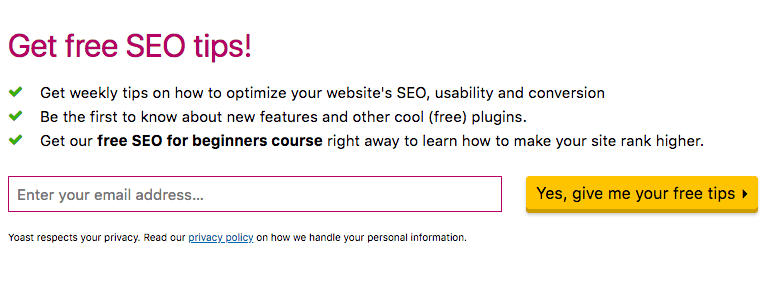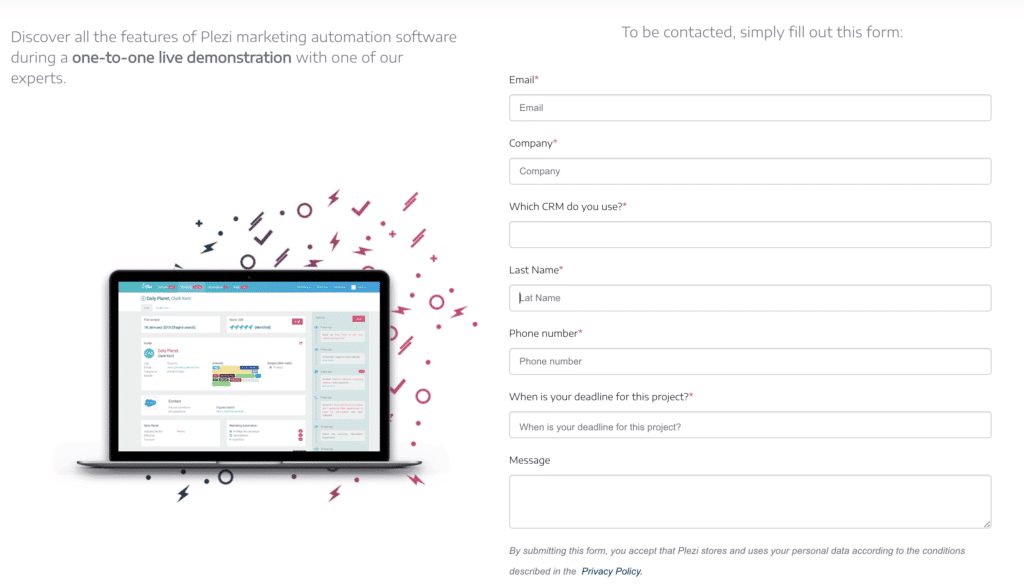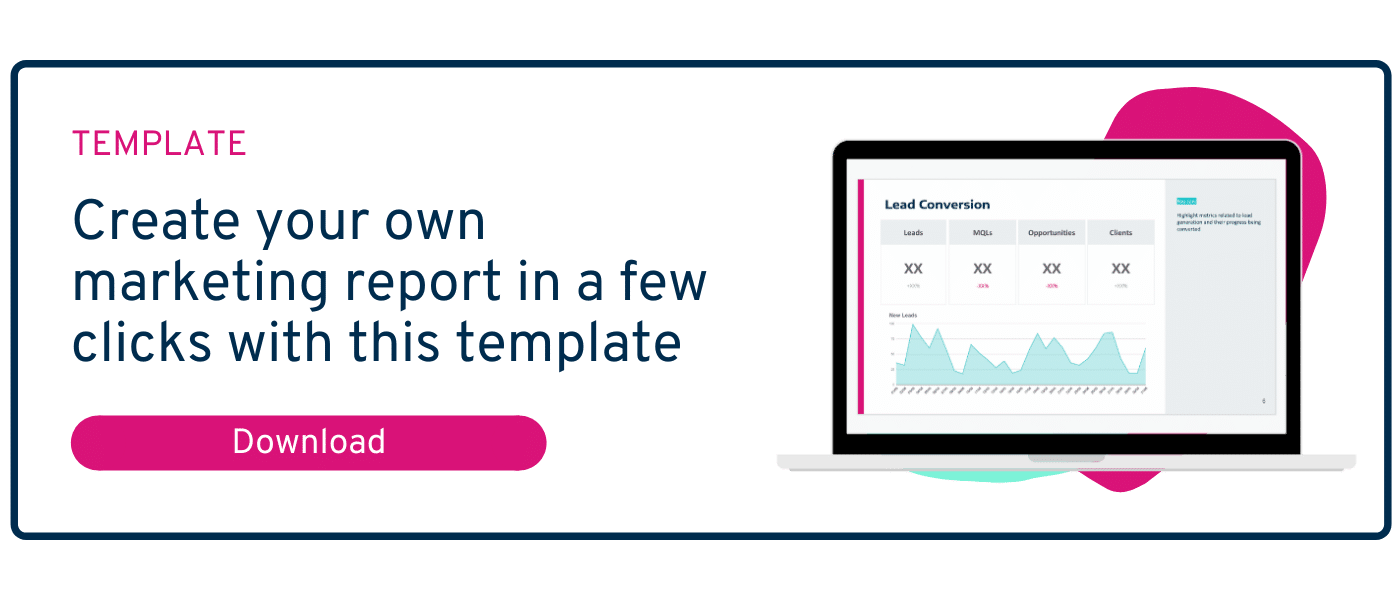If all your other resolutions for the New Year have fallen by the wayside, it’s not too late to stick to one good resolution this year – to transform more leads in to customers in the the next 12 months! You already have our guide to the marketing funnel to help. Okay – if you really want to do it, you have to make sure it works, so what are the key performance indicators you need to look at?
B2B marketers have an impact throughout the buying cycle
- generating web trafic
- converting visitors into leads
- qualifying leads ;
- support sales in the pre-buying phase
In other words, the role of marketing is to nurture a lead through to a sale.
To understand this in its minutia, it’s easier to analyse the marketing funnel at each stage and determine its conversion rate, to know where you are to set targets.
You’ll find 24 relatively simple techniques that will boost your conversion rate at each stage.
Step #1 : Visitor => Lead
1. Improve the speed of your site
A raw lead is someone who’s entered your site and given their contact details. Often this means offering content to download or a contact form.
Before getting there, however, visitors often come from a blog or content via search engine, social media or a third party site.
Before downloading this content, they must be convinced it is of use.
If your site is slow, they won’t be able to easily access that content.
According to a study cited by Google developers, 53% of users abandon sites that take more than 3 seconds to load.
To begin with, measure the speed of your site. There are several tools you can use and work on improving it.
Google Developers mention the example of a company that has seen a 7% increase in conversion rates following an improvement of 0.85 seconds in site loading time.
2. Expertly use CTA’s in articles
A CTA (call-to-action) is the first link between regular content and downloading premium content. The difference between a visitor and a lead.
Without it, even with excellent content, there is no way to track and nurture that customer. The call to action must encourage them to continue the relationship.
So, don’t forget to put a CTA in every piece of content you create.
How do you create efficient CTA’s
Good call to actions have 3 main requirements:
- Visible: they must be well placed. For short articles, you can place them at the end. For longer ones, you can add a short CTA in the middle and a longer one at the end. Color and size is also important, you want to attract people by not have it shining like a Christmas tree!
- Clear: the CTA must have a formulation that is clear and simple for everyone.
- Incentive: make the user want to see the information beyond the form.
For example, here is a CTA used by Yoast, the SEO plugin, at the end of their blog. It is clear and precise and not over the top:

Try avoid CTA’s too centered on product – in fact, B2B content in particular should educate, inform and help prospects and those that simply promote don’t get good traction on social networks.
Some digital marketing experts, like Neil Patel, no longer even have CTAs in the body of the articles. They use the sidebars, the top menu bar or exit pop-ups for their calls to action.
3. Offer educational content rather than product articles
Before looking for a particular product, visitors often look for information concerning their problem.
Normally, before you build a wall, you work out how to do it.
When a visitor arrives on our site, they don’t necessarily know us well and we know nothing of them. No need to over-do how brilliant you are!
To create the relationship, it’s better to use articles that indirectly demonstrate the value of your product. The message to get across is “We understand your problems and here is how to fix it”.
4. Reassure your prospects
Before giving their contact details, a visitor still needs to feel sure of themselves. That may not always be the case on the first visit.
How to offer assurance?
There are various different elements that go into this: customer logos, certifications, customer opinions, testimonials, case studies… as well as legal elements such as GDPR, conditions of sale etc.
5. Retargeting
The vast majority of website visitors do not turn in to customers or leads. It’s too good to be true!
On average, 1 to 3% go on to purchase. 4 to 8% enter the conversion tunnel by downloading something.
So what about the other 89 to 95%, who you have no details on?
If you do nothing, they’re gone!
Retargeting allows you to send targeted ads on other sites, based on their behavior. In this way, the visitor is reminded of your site with a targeted message. Retargeting will double your conversion rate at this stage of the buying cycle.
6. Optimize your landing page
After CTA’s, the landing page is the second link in your chain between regular content and your lead magnet.
The average landing page conversion rate is 2.35%. The top 25% convert to 5.31% or more.
With Plezi, this is not always the case. Some of our landing pages can convert over 30%.
How to optimize landing pages?
- One landing page = 1 offer. 48% of landing pages display more than one offer. Multiple offers only confuse conversions.
- No Navigation menu! You want to convert, not send a visitor to another page. Avoid distractions and exits.
- Think mobile: often landing pages are not made for mobiles – where most of your traffic will come from.
- Test your landing pages: colors, texts, CTA, all these elements influence the conversion rates. Doing A / B testing on multiple variants can increase conversions.
7. Treat your lead magnets
Lead Magnets are premium content that act as a ‘bargaining chip’ for a users contact information.
For a visitor to agree to complete a form and transmit their data, the lead magnet must therefore have clear and operational value. Ideally, this is content or a tool that makes the prospect’s life easier.
For example:
- a study that goes in-depth into a subject
- A White Paper on a particular theme
- a practical tool that acts as a facilitator
In each case, the lead magnet speaks to the problematic of the contact
Behind this, you also need to have a scoring system and a marketing automation tool to enable you to evaluate the value of the lead from the content downloaded.
8. Optimize existing articles
Often, we are looking for new sources to generate leads, but shouldn’t forget that existing articles can generate significant traffic.
It is important to cross-reference SEO data and conversions stats to see what is being optimized. Sometimes, all it takes is to add a CTA to an existing content. Othertimes, you will need to optimize it further.
9. Use smart forms
Between a visitor becoming a lead, after the CTA, there is normally a form to fill out. Nobody likes filling them out – but you will need the information on the lead.
How do you make it as easy as possible?
The shorter a form, the more likely you are to convert. By reducing the number of fields to be completed to 4 or less, you can increase its conversion rates by 160%.
You need to ask the user for the most necessary information depending on the phase of the buying cycle. This means you must prioiritize information.
Then, to help understand this data, you can use our Smart Forms from Plezi, to have a more detailed profile based on the maturity of your visitor.

Step #2: Lead => MQL and how to follow the KPI’s?
10. Submit demo or appointment requests
Sometimes we tend to multiply the layers of content before making contact with a lead.
It’s better not to rush a prospect when they’re not ready, at the same time you must know when to strike while the Star is hot.
Therefore, always keep the option for a client to contact you. At Plezi, we have a demo request CTA on our menu bar.
11. Webinars
How can you quickly identify and qualify leads that have a genuine interest in your product?
At this point, it may still be too early for a salesperson to contact them. We’re still not sure about their profile or their needs.
A webinar is a great way to build relationships at a low cost. It is a relatively light and simple tool to set up. We find that 45% of people who look at the page sign up.
Why do webinars work?
They are based on the promise of high value-added content that can be consumed immediately and effortlessly. What’s more, they offer lead’s direct contact with an expert speaker in their field capable of responding live to their problems.
So, it’s ideal for convincing prospects and means you can pass them on to your sales team.
12. Video
The amount of articles on the web is staggering, getting increasingly difficult to stand out. The longer the article the more the risk of information overload!
With video, you can also vary your content – as a tutorial, as a brief pitch, as a personal message etc.
And….. what about the other 12 points? Well, we’ve already discussed information overload…… we’ve got lots more tips to give to improve the conversion rate (or at least 12 more) so wait for part two of this blog next week and we will continue supporting the buyers’ journey on your site!!







